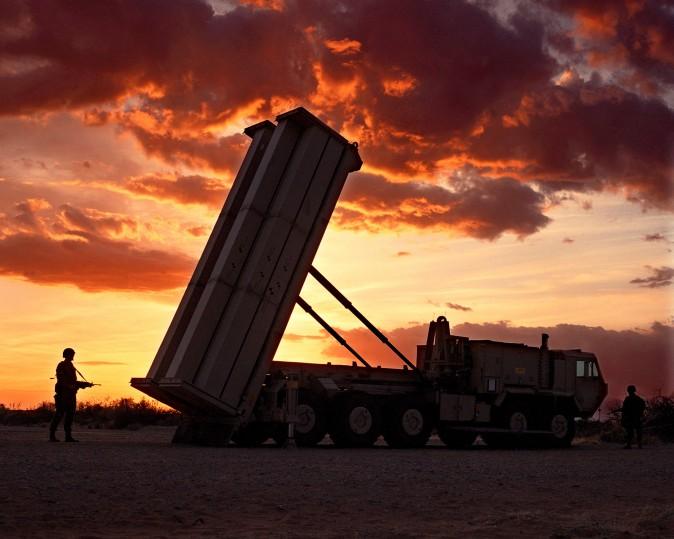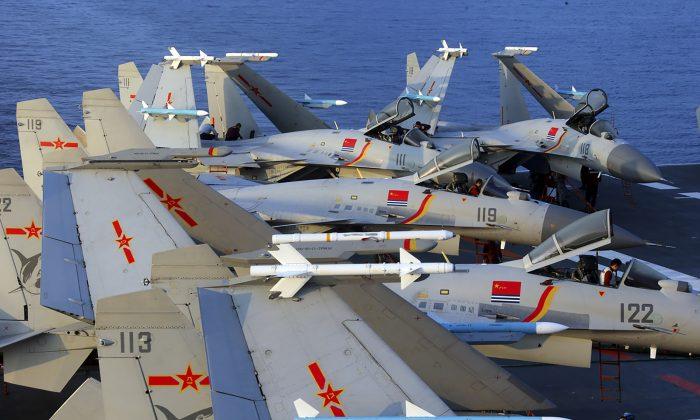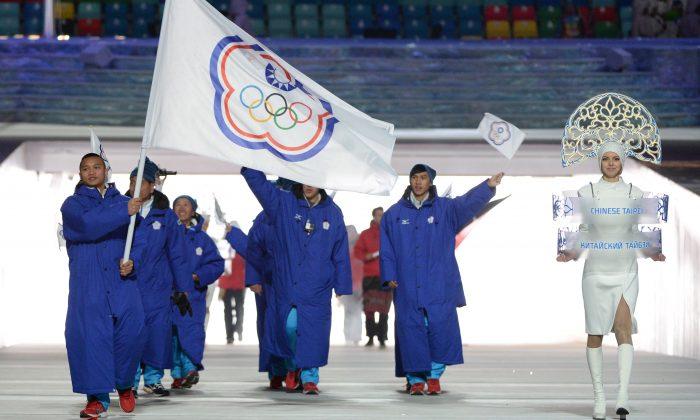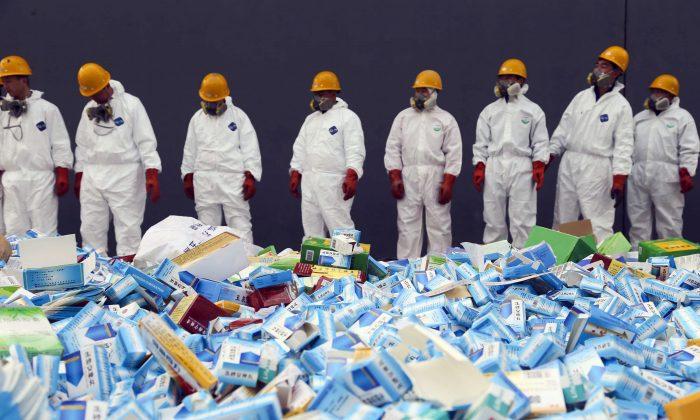China appears to have conducted an anti-ballistic missile (ABM) test in western China on the night of July 23, according to numerous reports and photos uploaded by Chinese internet users. The test occurs in the context of China’s criticism of U.S. ABM programs and, most recently, strong opposition to the U.S. deployment of the ABM-like THAAD system in South Korea, even as North Korea continues to conduct tests of intercontinental ballistic missiles.
On the night of July 23 and on July 24, numerous netizens across western China uploaded photos to Chinese social media sites such as Weibo, showing what appears to be a bright and curve-shaped contrail in the dark night sky. Some of the photos also show a densely structured mushroom-shaped fog emerging from the ground similar to the smoke cloud typically produced by a rocket launch.
Neither the Chinese regime nor any of its official media mouthpieces have yet released any news regarding the anomaly observed by many on Sunday night. It was noted however that China’s official aviation authority issued a series of NOTAMs, or Notice to Airmen, on the night of July 23 that declared a number of zones in Xinjiang and Qinghai provinces in far western China to be restricted airspace temporarily off-limit to civilian aviation flight.
Based on the geographically-tagged locations of the photos uploaded to Weibo, it can be observed that many of the sightings occurred around the city of Urumqi, the capital of the Xinjiang autonomous region. There were also sightings at numerous places close to Urumqi, such as the town of Bohuzhen, the lake of Lop Nur, Jimsar county, and Mangnai county to the south.
Observers have speculated that the contrail observed by many on Sunday night might have been the result of a new anti-ballistic missile test conducted by the People’s Liberation Army (PLA). The town of Bohuzhen in particular is close to Korla, where China maintains a military site that is known to have conducted anti-ballistic missile tests in the past. A Weibo user in Bohuzhen uploaded a series of photos showing highly convoluted contrails that could have been the flight path of maneuvering missiles.
One of the airspaces declared temporarily off-limits in the NOTAM was south of Jiuquan, Gansu Province. Jiuquan is home to China’s major satellite launch center, a site that has also been used as the launch location for many of China’s past ABM tests.
“Jiuquan is often used to launch target missiles for anti-missile interceptors launched from Korla in Xinjiang Province,” said Richard Fisher, a well-known defense analyst and a senior fellow at the International Assessment and Strategy Center. “Korla has been the center of PLA anti-missile research and development since China’s first missile defense program ordered by Mao Zedong in 1963. ”
Dutch Pilot Christiaan van Heijst, who was flying a Boeing 747-8 Freighter from Hong Kong to Baku in Azerbaijan on Sunday, also observed the contrail while cruising at 32,000 feet on a westbound flight path.
“We witnessed something that was truly a once in a lifetime event.” Van Heijs wrote on his website. “What started unexpectedly with an unusual bright spot on the horizon quickly changed into a droplet-shaped bubble that rapidly grew in size and altitude.”
It is not known what type of missile was tested by the PLA in the July 23 test, although some Chinese-language media speculated that either the HQ-19 or HQ-26 were tested. The lack of a timely official news release or acknowledgment from the Chinese regime, however, means that the regime probably does not wish to boast about this particular test, despite the fact that many Chinese netizens have already exposed the event on social media.
Double Standards over Ballistic Missile Defense
Ballistic missile defense is often controversial since it can potentially be used to compromise the strategic nuclear deterrence capability of other major powers that possess ballistic missiles. China has been consistently very critical of U.S. missile defense programs or ABM testing. In contrast, China’s own ABM testing and deployments rarely incur international attention, let alone protestation.

Earlier this year China vehemently opposed the U.S. deployment in South Korea of THAAD, or Terminal High Altitude Area Defense system. China insisted that the U.S. THAAD, despite being deployed to defend against North Korea’s nuclear missile threat, could be used to track and intercept missiles launched from China, which they perceived as the true purpose of its deployment.
China’s opposition to THAAD was so strong that it sanctioned Lotte, a South Korean company that offered land to be used for THAAD sites. South Korean President Moon Jae-in, newly elected in May, initially halted further deployment of THAAD. However, following the most recent North Korean missile test, on July 28, South Korea decided to deploy more THAAD units.




Friends Read Free